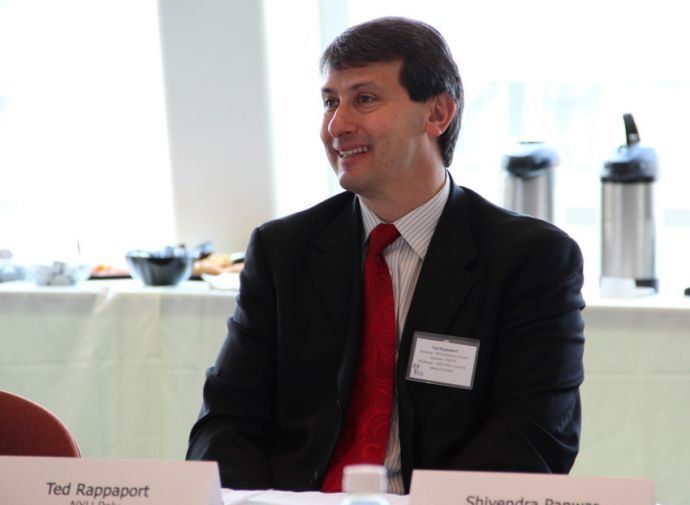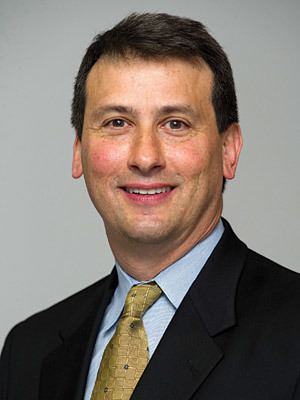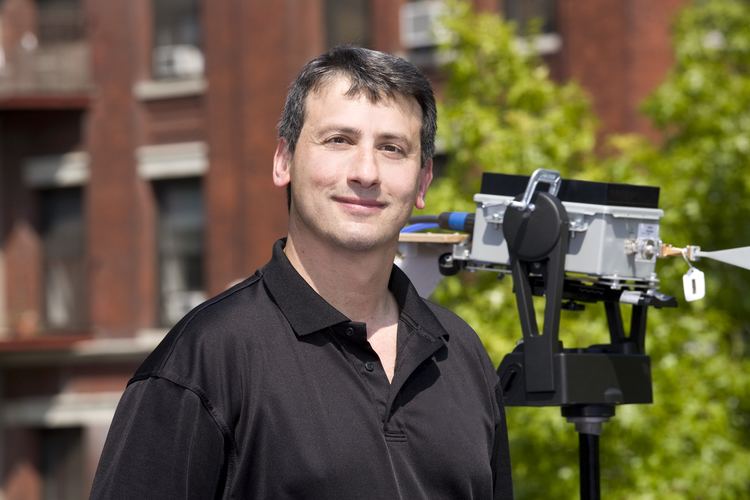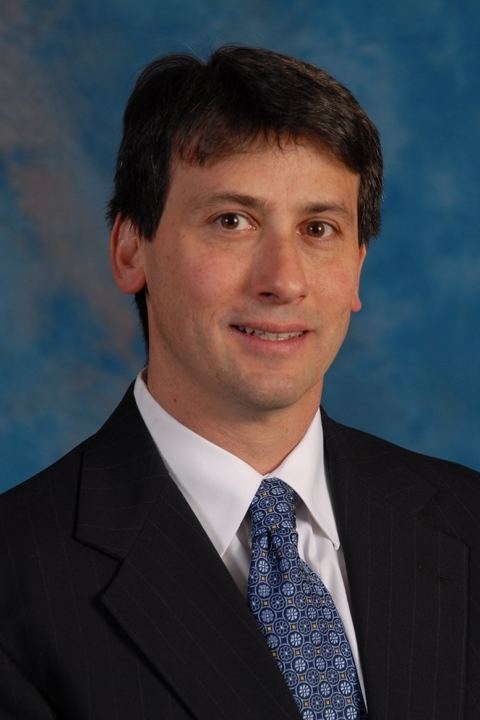Role Writer | Name Theodore Rappaport Fields Wireless | |
 | ||
Notable awards 2015 IEEE Donald G. Fink AwardPurdue University Distinguished Engineering Alumnus (2013)William E. Sayle Award for Achievement in Education from IEEE Education Society (2012)IET Sir Monty Finniston Medal for achievement in engineering and technology (2011)Frederick E. Terman Outstanding Educator Award from the ASEE (2002)Stephen O. Rice Prize Paper from IEEE Communications Society (1999)National Science Foundation Presidential Faculty Fellow Award (1992)Marconi Society- IEEE Marconi Young Scientist Award (1990) Books Wireless Communications: Principles, Millimeter Wave Wireless, Smart Antennas for Wirele, Millimeter Wave Wireless, Solutions Manual Wireless | ||
Doctoral advisor Clare D. McGillem | ||
Theodore (Ted) Scott Rappaport (born November 26, 1960) is an American electrical engineer in the field of wireless communications, the David Lee/Ernst Weber Professor of Electrical and Computer Engineering at New York University Tandon School of Engineering and founding director of NYU WIRELESS. He has written several textbooks, including Wireless Communications: Principles and Practice. He co-founded TSR Technologies, Inc. and Wireless Valley Communications, Inc., and founded academic wireless research centers at Virginia Tech, the University of Texas at Austin, and New York University. He has conducted ground-breaking research that has led the world to adopt millimeter wave frequencies for future fifth generation 5G wireless networks.
Contents

Early life

Ted Rappaport was born in Brooklyn, New York and moved around a lot as a child; he was a senior at Lincoln High School in Cambridge City, IN when his parents told him to leave because as Rappaport explained in an interview, "They would say I was rebellious, and I would say they were irrational." He lived out of his car, and also stayed with friends for several months while attending high school. He was awarded a college scholarship and went on to earn three degrees at Purdue University.

Rappaport first developed an affinity for radio at age 5 when he would visit his grandfather, and together they would spend hours "tuning around, listening to Morse code and ship-to-shore" on his grandfather's Philco antique shortwave radio. From those early beginnings, he developed a fascination for wireless and "loves to experiment with antennas". At age 14, he fractured his leg playing football which resulted in confinement to a body cast for six months. His grandmother gave him a shortwave radio which helped keep him occupied while his leg was healing. He acquired his ham radio license, and while in high school began teaching adults Morse code. It was through his ham radio activity that he met the families he lived with after being forced to leave his parent's home. He credits those families as "wonderful role models". After he graduated high school, Rappaport sold his car, boxed-up his belongings and hitchhiked to West Lafayette, Indiana to attend Purdue. His scholarship didn't cover all the bills so he worked side jobs, such as cleaning up garbage cans in the dorm, working at the campus radio station, and doing some co-op work for Magnavox.
Rappaport was among the first graduates of Purdue University's National Science Foundation Engineering Research Center (ERC) where he co-authored the proposal that resulted in the National Science Foundation award presented to Purdue by President Ronald Reagan. Rappaport's master's thesis, which was used for the project, was on display and garnered some attention from President Reagan, who told Rappaport, "Nice job, son." It was at that point Rappaport knew he wanted to be an academic. Rappaport met his wife Brenda during his sophomore year; she was an agricultural engineer also attending Purdue. They married before his senior year at Purdue, and had three children together.
Academic career
Rappaport graduated from Purdue University with a BS, MS, and PhD in electrical engineering in 1982, 1984, and 1987, respectively. He joined the faculty of Virginia Tech in 1988 as an assistant professor and in 1990 founded the Mobile and Portable Radio Research Group (MPRG), one of the world's first academic research centers for the fledgling wireless communications field.
In 2002 Rappaport accepted the William and Bettye Nowlin professorship at The University of Texas at Austin (UT Austin).
In 2012 he joined faculty at NYU Polytechnic School of Engineering to lead their wireless communications engineering and research initiatives as the David Lee/Ernst Weber Chair of Electrical Engineering while also holding professorships at NYU Courant Institute of Mathematical Sciences and NYU School of Medicine.
A researcher and teacher of electrical and computer engineering, Rappaport specialized in wireless communications. He founded three academic wireless research centers at New York University (NYU WIRELESS), The University of Texas at Austin (WNCG), and Virginia Tech (MPRG). He wrote one of the first widely used wireless communications textbooks for academia and industry and has co-authored textbooks on simulation, smart antennas, and millimeter wave wireless communications. He is a co-inventor on more than 100 US and International patents that have issued or are pending and has advised or launched high-tech companies in the wireless communications and computing fields, and two university spin-off companies.
He has conducted research in wireless communications and smart antennas, and in the field of millimeter wave wireless communication networks and 5G wireless. While on the faculty of Virginia Tech, Rappaport launched the Virginia Tech/MPRG Symposium on Wireless Personal Communications that was held on campus each summer. He received the Virginia Tech Alumni Award for Research in 1996, and also founded two wireless companies with his students: TSR Technologies in 1989, and Wireless Valley Communications in 1995. TSR Technologies invented some of the world's first software defined radio (SDR) products, including the Cellscope 2000. In 2005, Rappaport along with other faculty at UT Austin received an IC2 Endowed Research Fellows appointment.
Industrial career
Rappaport founded TSR Technologies, Inc. in 1989 which involved the manufacture of cellular radio/PCS software radios. He sold the company in 1993 to Allen Telecom. Rappaport and Roger Skidmore, a graduate student of MPRG, co-founded Wireless Valley Communications in 1995, an early developer of site-specific design and modeling products for the wireless local area network (WLAN) and indoor cellular/PCS that was sold to Motorola in December 2005. At UT Austin, Rappaport founded the Wireless Networking and Communications Group (WNCG), and in 2011 received the Industry/University Collaborative Research Center (IUCRC) award sponsored by the National Science Foundation (NSF). Rappaport also launched the Texas Wireless Summit which became an annual fall event hosted by UT Austin’s wireless research program.
In 2012, he joined New York University and Polytechnic University prior to the merger of the two universities. He founded NYU WIRELESS one of the world’s first academic research centers to combine wireless engineering, computer science, and medicine. He launched the Brooklyn 5G Summit (B5GS) with co-sponsorship from Nokia in 2013, an annual event held in April on the NYU-Poly Campus. His propagation measurements and channel modeling work for millimeter-wave wireless communications proved to the world that millimeter waves could be used for future mobile communication systems, and was cited in the Federal Communications Commission (FCC) Notice of Inquiry on the use of spectrum above 24 GHz for mobile communications (Spectrum Frontiers rulemaking proposal), and was featured in the September 2014 issue of IEEE Spectrum.
Professional Activities
Rappaport has served on the Technological Advisory Council of the Federal Communications Commission (TAC), assisted the governor and CIO of Virginia in formulating rural broadband initiatives for Internet access, testified before the US Congress and conducted research for National Science Foundation, Department of Defense, and other global telecommunications companies. Rappaport serves as a technical advisor to Straightpath (NYSE: STRP). In April 2017, Straightpath entered into a definitive agreement to be acquired for $3.1 Billion. His early work helped develop the first Wi-Fi standards and characterized multipath channels in a wide range of factory buildings in the 1300 MHz band when most wireless communication operated at lower frequencies. His research program at NYU WIRELESS worked on developing fundamental theories and techniques for characterizing, modeling, and using knowledge of wireless channels for future potential in millimeter wave wireless communication systems.
In the 1990s, at the request of Institute of Electrical and Electronics Engineers (IEEE), Rappaport compiled several compendia of "selected readings" on various topics of wireless communications. Rappaport served as a senior editor of the IEEE Journal on Selected Areas in Communications (JSAC), and led in the creation of the IEEE Transactions on Wireless Communications. In 2006 Rappaport served on the Board of Governors of the IEEE Communications Society (ComSoc), has served consecutive terms on the Board of Governors for the IEEE Vehicular Technology Society (VTS) beginning in 2008 and served on the board of directors for the Marconi Society from 2012-2015.
He launched the Communications Engineering and Emerging Technologies (CEET) Book Series with Pearson/Prentice-Hall in 1996, and serves as Series Editor. The series has over 20 books in the field of communications technology.
